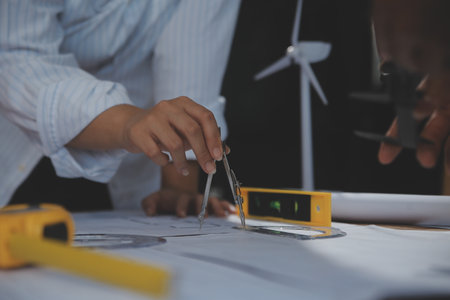1. Understanding Geofencing and Smart Thermostats
If you’re looking to cut down on your monthly energy bills without sacrificing comfort, geofencing and smart thermostats are two buzzwords you need to know. Geofencing is a location-based technology that creates a virtual boundary around your home using your smartphone’s GPS. When you cross this invisible fence—either leaving or coming home—your connected devices, like a smart thermostat, can automatically adjust the temperature settings for maximum efficiency. Smart thermostats, on the other hand, are advanced devices that learn your schedule, preferences, and even local weather patterns to keep your home comfortable and energy-efficient. These technologies have rapidly gained popularity across the United States as more homeowners look for ways to save money and reduce their environmental impact. With energy costs on the rise and sustainability top-of-mind, geofencing paired with smart thermostats offers a seamless solution tailored for today’s busy American lifestyle.
2. How Geofencing Syncs With Your Lifestyle
Geofencing technology takes home automation to the next level by using your smartphone’s location data to create a virtual boundary around your home. Here’s how it seamlessly fits into your daily routine: whenever you leave or approach your house, the geofence detects your movement and communicates with your smart thermostat in real time. No more fiddling with temperature settings before you head out or walk back in—your system does the thinking for you.
The Magic of Location-Based Automation
With geofencing, your thermostat knows when you’re coming and going. As soon as you cross the set perimeter (usually a radius of a few hundred feet from your property), the thermostat either powers down to save energy or ramps up to deliver comfort by the time you step inside. This means you always walk into an environment that feels “just right”—without wasting electricity while you’re away.
How Does Geofencing Benefit Your Daily Routine?
| Scenario | What Happens | Energy Impact |
|---|---|---|
| You leave home for work | Thermostat sets to eco-mode automatically | Saves energy while no one is home |
| You’re on your way back | Thermostat starts pre-heating or cooling | Comfort restored, no wasted energy during empty hours |
| Your schedule changes unexpectedly | System adjusts instantly based on your phone’s location | No more running AC/heat for an empty house |
Real-Time Optimization for American Lifestyles
This technology is tailor-made for busy American households, where schedules can change at a moment’s notice. Whether you’re juggling after-school pickups, late meetings, or spontaneous weekend getaways, geofencing ensures that your home stays efficient and comfortable—no matter what life throws at you.
![]()
3. Slashing Your Energy Bill: The Cost-Saving Benefits
Ready to see real savings on your monthly utility bills? Geofencing paired with smart thermostats is a game-changer for American households looking to cut costs without sacrificing comfort. Here’s how this dynamic duo works together to help you keep more money in your pocket:
Pinpoint Accuracy Cuts Waste
Geofencing technology uses your smartphone’s location to automatically detect when you’re home or away. Once you leave the designated area, your smart thermostat instantly adjusts the temperature—no more heating or cooling an empty house. This precise control stops energy waste at the source, which translates into lower monthly bills.
Automatic Adjustments, Zero Hassle
Forget about constantly fiddling with your thermostat settings. When combined with geofencing, your smart thermostat learns your patterns and adapts in real-time. Whether you’re heading out for work, picking up the kids, or coming home late from a night out, your HVAC system responds automatically—saving energy during those times you don’t need it most.
Long-Term Savings Add Up
The U.S. Department of Energy estimates that turning your thermostat back 7-10°F for eight hours a day can save as much as 10% annually on heating and cooling. With geofencing and smart thermostats, these savings happen effortlessly every single day. Over months and years, that means hundreds—even thousands—of dollars back in your wallet.
Optimized Comfort Without Compromise
Modern American homes value both comfort and cost-effectiveness. With geofencing-enabled smart thermostats, you never have to choose between the two. You’ll always come back to a perfectly comfortable space—without paying extra for unnecessary energy use. It’s a smarter way to manage your home, reduce your carbon footprint, and maximize your long-term savings.
4. Easy Setup and Integration With Popular Devices
Setting up geofencing with smart thermostats is easier than you might think, especially with the broad compatibility of today’s leading devices and home automation platforms in the U.S. Here’s a step-by-step guide to getting started and making sure your system works seamlessly with your lifestyle.
Step 1: Choose a Compatible Smart Thermostat
Not all thermostats support geofencing, so it’s important to pick one that fits your needs and integrates well with your existing smart home ecosystem. The table below lists some of the top models and their compatibility with popular platforms:
| Smart Thermostat | Geofencing Support | Works With |
|---|---|---|
| Nest Learning Thermostat | Yes | Google Home, Alexa, SmartThings |
| ecobee SmartThermostat | Yes | Alexa, Apple HomeKit, Google Home, SmartThings |
| Honeywell T9/T10 Pro | Yes | Alexa, Google Home, SmartThings |
Step 2: Install Your Thermostat
Most smart thermostats come with straightforward installation guides and user-friendly apps. You’ll typically need to remove your old thermostat, connect wiring as directed, mount the new device, and power it on. If you’re unsure about electrical work, hiring a professional is always a safe bet.
Step 3: Enable Geofencing in the App
Once installed, download the corresponding app (Nest, ecobee, Honeywell Home, etc.) from the App Store or Google Play. After signing in or creating an account, navigate to the geofencing or location-based settings. Here you can set up your “home” perimeter—usually by simply allowing the app access to your smartphone’s location services.
Pro Tip:
If multiple people live in your home, invite them to join the app so everyone’s smartphone location triggers the thermostat appropriately for true energy savings.
Step 4: Integrate With Other Smart Devices
The best part about today’s smart thermostats is how they work alongside other devices. Use platforms like Alexa Routines or Google Home Automations to coordinate lights, security systems, and even garage doors based on whether you’re home or away. This way, geofencing doesn’t just cut energy costs—it streamlines your whole living space.
A Quick Comparison of Popular Home Automation Platforms:
| Platform | Main Features |
|---|---|
| Google Home | Smooth Nest integration; voice control; routines |
| Amazon Alexa | Wide device compatibility; custom routines; voice commands |
| Apple HomeKit | Tight iPhone/iPad integration; privacy-focused; Siri voice support |
The bottom line? Setting up geofencing with a smart thermostat is fast and user-friendly—even if you’re not super tech-savvy. In less than an afternoon, you’ll have a smarter home and lower energy bills without sacrificing comfort or convenience.
5. Privacy and Security: What Homeowners Need to Know
When it comes to geofencing and smart thermostats, convenience and energy savings are just part of the equation. As these technologies rely on tracking your smartphone’s location to automate home climate control, they inevitably raise important questions about privacy and security. Here’s what every homeowner should know before embracing these smart solutions.
Understanding Geolocation Data Risks
Geofencing works by collecting your device’s location data to determine when you’re home or away. While this enables your thermostat to adjust settings automatically for optimal comfort and efficiency, it also means that sensitive geolocation information is being transmitted and stored—sometimes by third-party apps or cloud services. In a worst-case scenario, if this data were accessed by hackers, it could potentially reveal your daily routines or even when your house is unoccupied.
Tips for Keeping Your Data Secure
- Choose Reputable Brands: Stick with established companies known for robust privacy policies and strong security practices. Check product reviews and ratings from U.S.-based consumer advocacy groups.
- Update Regularly: Always keep your smart thermostat’s firmware and mobile app updated to ensure the latest security patches are in place.
- Enable Two-Factor Authentication (2FA): Whenever possible, use 2FA for your smart home accounts to add an extra layer of protection against unauthorized access.
- Review App Permissions: Limit location sharing to only those devices and apps necessary for geofencing to function. Be wary of granting broad permissions that aren’t essential.
- Secure Your Wi-Fi Network: Use strong passwords, enable WPA3 encryption if available, and avoid using default router settings that can be easily compromised.
The Bottom Line
Smart thermostats with geofencing features offer Americans an easy path to lower energy bills, but it’s crucial to stay vigilant about privacy. By understanding how your data is used and following best security practices, you can enjoy both comfort and peace of mind in your connected home.
6. Real-Life Success Stories From American Households
Nothing beats hearing directly from people who’ve reaped the rewards of geofencing and smart thermostats. Across the U.S., families and individuals are seeing real results—not just in comfort, but on their energy bills.
Case Study: The Johnson Family in Austin, Texas
The Johnsons installed a smart thermostat with geofencing two years ago. Before, they’d often forget to adjust the AC when leaving home, leading to wasted energy during Texas’ scorching summers. After setting up geofencing through their smartphone app, their thermostat now automatically adjusts when the last family member leaves or returns. Their annual energy bill dropped by nearly 20%. “We never realized how much we were overspending until we saw the difference on our bill,” says Mrs. Johnson.
Testimonial: Single Apartment Dweller in Chicago
Megan, a young professional living alone, shares: “I used to keep my apartment at one temperature all day because I was worried about coming home to a cold place. With geofencing, my smart thermostat knows when I’m on my way back and starts heating up my space just before I arrive. I save about $25 a month without sacrificing comfort.”
Eco-Conscious Households See Big Gains
Many environmentally minded Americans use smart thermostats with geofencing as part of their commitment to sustainability. The Smiths in Portland report that not only have they cut energy costs by 18%, but they also feel good knowing they’re reducing their carbon footprint every time their home’s climate system powers down automatically.
Why These Stories Matter
These real-life examples highlight how easy it is for anyone—families, couples, singles—to benefit from this technology. Whether you live in a sprawling suburban house or a city apartment, geofencing and smart thermostats can lead to significant savings without any hassle or lifestyle changes. The common thread? Convenience meets savings, right here at home in America.


